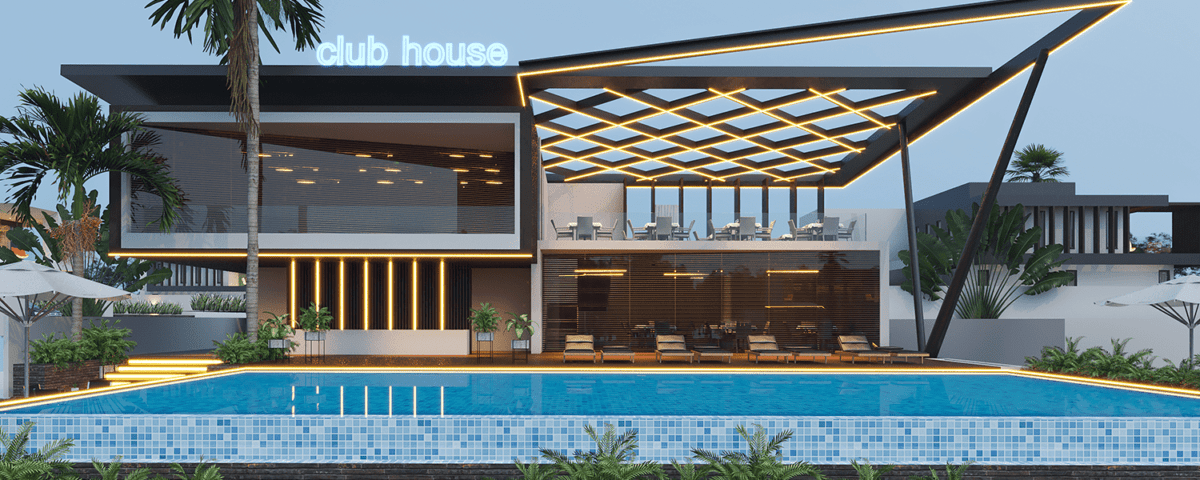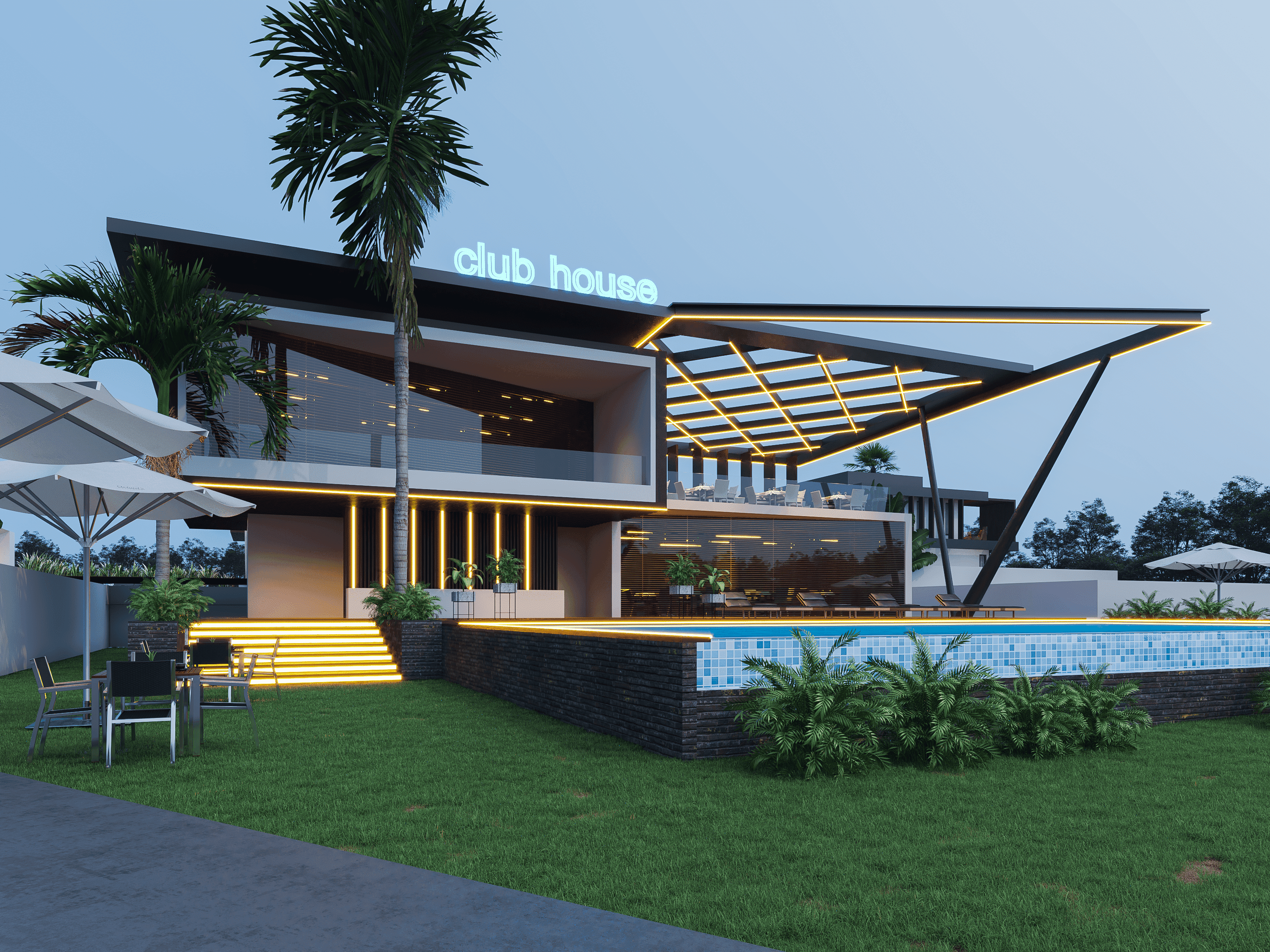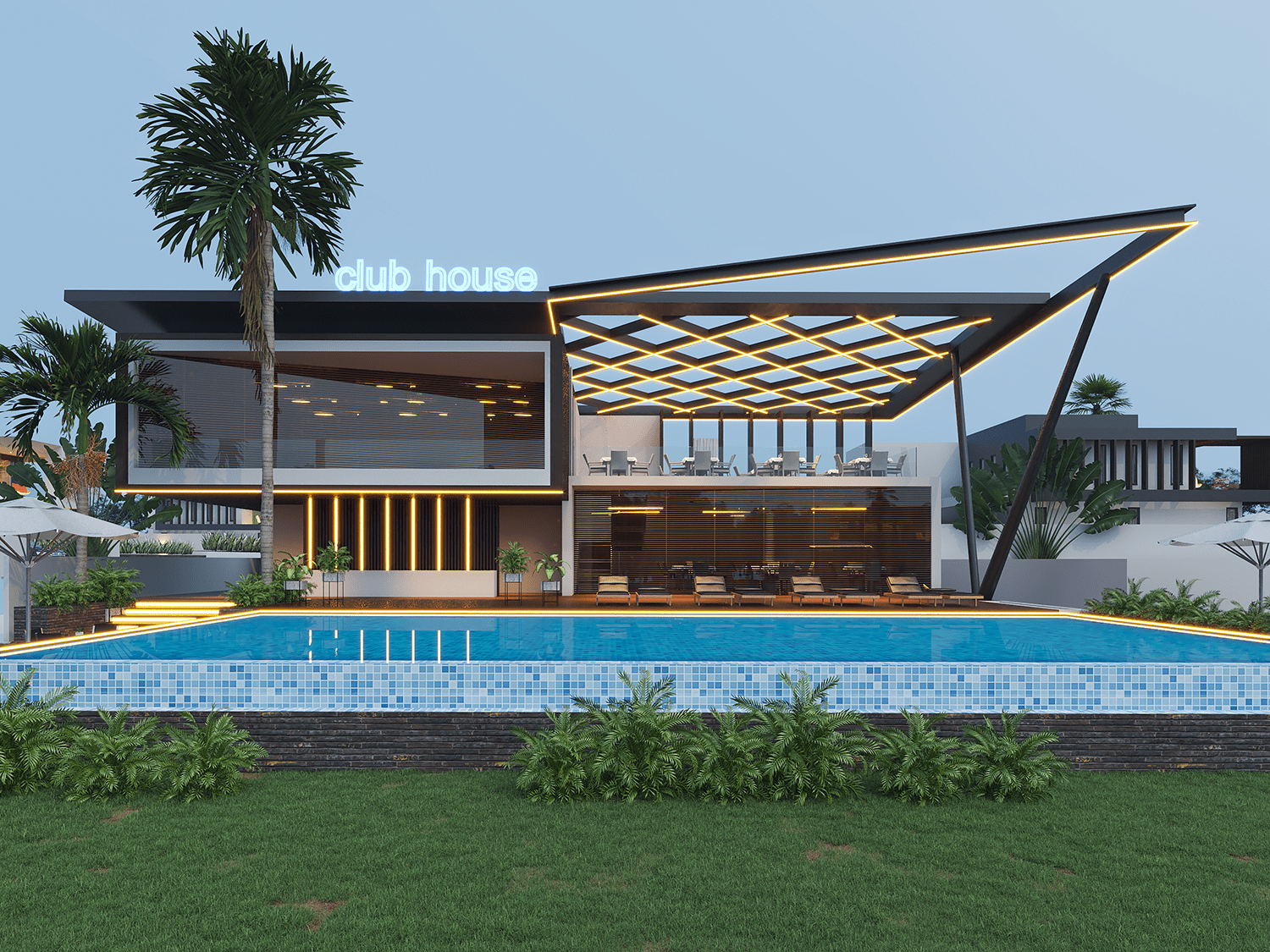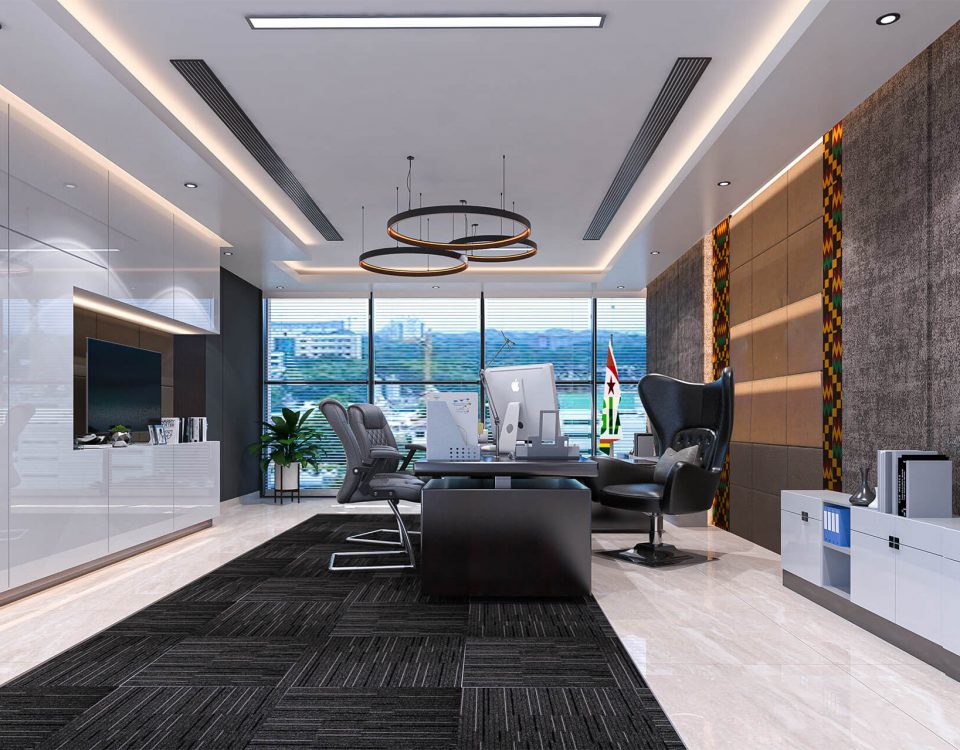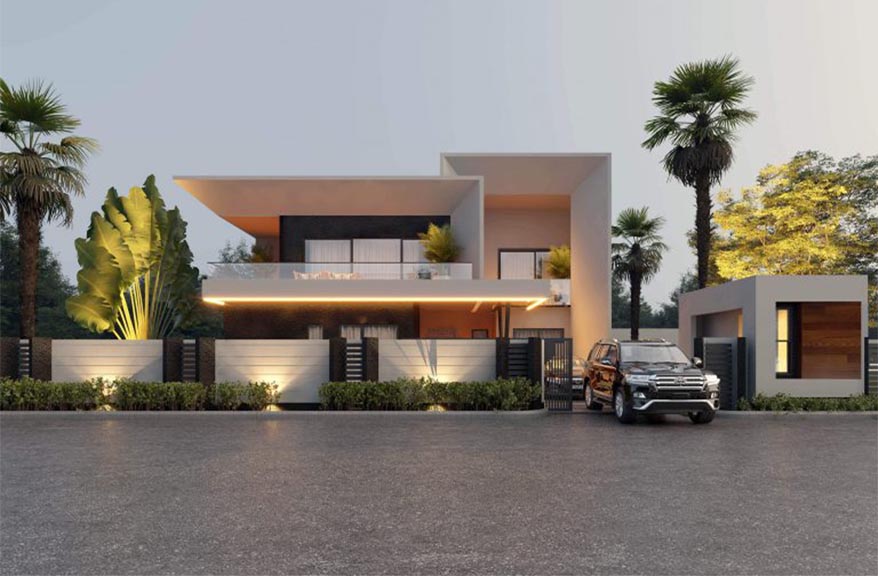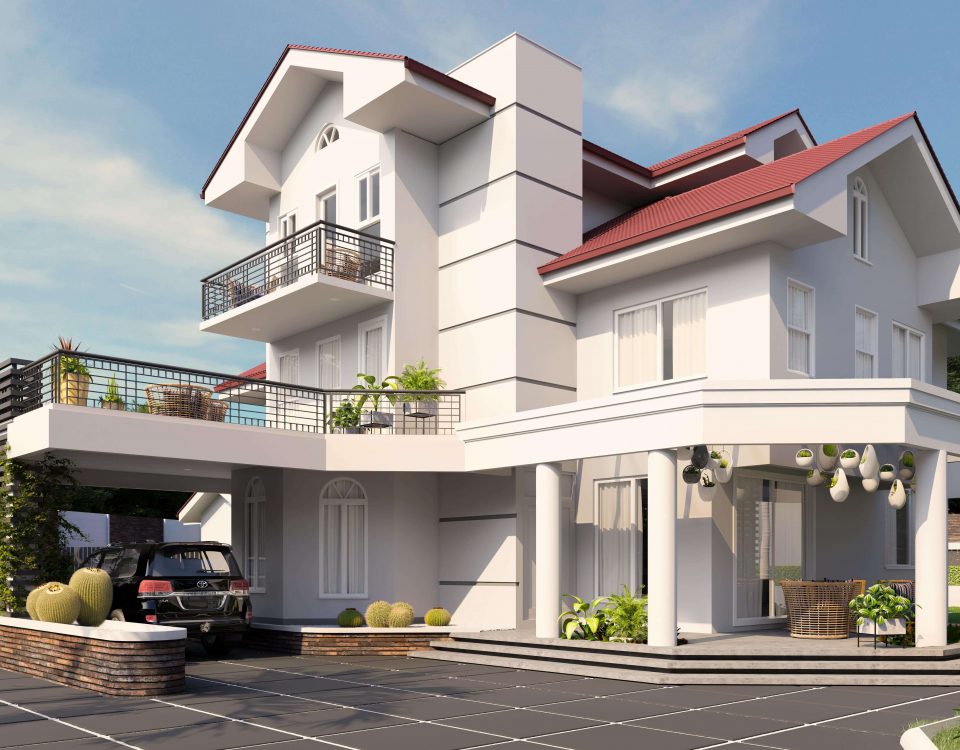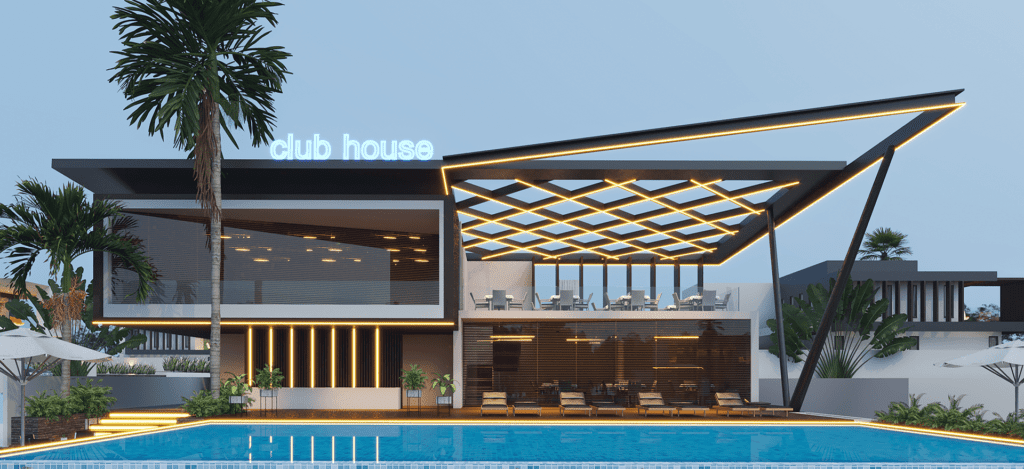
Unique Building Materials for Modern Architecture

As the world of architecture continues to evolve, so do the materials used in construction. From sustainable options to innovative designs, there are a plethora of unique building materials that modern architects are incorporating into their designs. In this blog post, we explore some of the most intriguing and visually stunning materials being utilized today – from recycled plastics to natural fibers – and how they're shaping the future of architecture. So sit back, relax, and prepare to be amazed by these extraordinary building materials!
Introduction to Modern Architecture
There are many unique building materials available for modern architecture. Some of these materials are traditional, such as stone and wood, while others are more contemporary, such as concrete and glass. Each material has its own benefits and drawbacks, so it is important to choose the right material for each project. Stone is a popular choice for modern architecture because it is durable and has a natural beauty. However, stone can be expensive and difficult to work with. Wood is another popular choice for modern architecture. It is relatively easy to work with and can be used to create a variety of looks. However, wood is not as durable as stone and can be damaged by weather and insects. Concrete is a strong material that can be molded into any shape. It is also very affordable. However, concrete can crack over time and does not have the same aesthetic appeal as other materials. Glass is a versatile material that can be used in a variety of ways in modern architecture. It is transparent, so it allows light to pass through, but it can also be tinted or frosted for privacy. Glass is also relatively easy to clean and maintain. However, glass can break easily and is more expensive than some other materials.
Benefits of Using Unique Building Materials
There are many benefits of using unique building materials in modern architecture. These materials can add visual interest and contrast to a building, helping it to stand out from the rest. They can also be used to create interesting shapes and forms that would not be possible with traditional materials. In addition, unique materials can help to reduce the weight of a structure and improve its thermal properties.
Different Types of Building Materials There are many different types of building materials used in modern architecture. Some of the most common include concrete, glass, metal, and wood. Each material has its own unique properties and benefits that make it well-suited for specific applications. Concrete is a strong and durable material that is often used in the construction of foundations, walls, and floors. It is also a popular choice for outdoor features such as patios and walkways. Glass is another popular choice for modern architecture due to its aesthetic appeal and ability to let in natural light. It is commonly used for windows, doors, and skylights. Metal is often used for structural elements such as beams and columns, as well as for exterior cladding. Wood is a versatile material that can be used for both structural and finishing elements. It is commonly used for frames, flooring, cabinets, and doors.
- Concrete
Concrete is one of the most commonly used building materials in the world. It is strong, durable, and relatively inexpensive to produce. However, concrete can also be a very versatile material. It can be molded and shaped into a variety of different forms, making it an ideal material for modern architecture. There are a few different types of concrete that are commonly used in construction. The most common type is Portland cement concrete, which is made with a mix of cement, water, and aggregate (usually sand and gravel). This type of concrete is often used for structural purposes, such as foundations and walls. Another type of concrete that is sometimes used in construction is pre-cast concrete. This type of concrete is made by pouring concrete into moldable forms, such as molds or casts. Once the concrete has hardened, the mold or cast can be removed, revealing the finished product. Pre-cast concrete is often used for decorative purposes, such as ornamental features or sculptures. There are many benefits to using concrete in construction. Concrete is very strong and durable, so it can support a lot of weight. It is also fire resistant and weather resistant, making it an ideal material for both indoors and outdoors applications. Concrete can also be tinted or stained to create a variety of different looks.
- Steel
In modern architecture, steel is becoming increasingly popular as a structural material. Its strength and durability make it ideal for both new construction and renovation projects. In addition, steel is very versatile and can be used in a variety of ways to create unique looks. One of the most common uses for steel in architecture is as a framing material. Steel framing is strong and stable, making it perfect for taller buildings. Additionally, steel framing can be easily recycled, which makes it an environmentally friendly choice. Another popular use for steel in architecture is as cladding. Cladding is a type of exterior finish that helps protect a building from the elements. Steel cladding can give a building a modern look and can be used on both new construction and renovation projects. If you are looking for unique building materials for your next project, consider using steel. Its strength, durability, and versatility make it an excellent choice for both new construction and renovation projects.
- Bamboo
Bamboo is an environmentally friendly, sustainable building material that can be used in a variety of ways in modern architecture. Bamboo grows quickly and does not require the use of pesticides or herbicides, making it a more eco-friendly option than traditional timber. Bamboo can be used for structural purposes, such as beams and columns, or for decorative elements, like bamboo floors or bamboo panels. Bamboo is strong and durable, yet flexible, which makes it ideal for earthquake-resistant construction. Bamboo is also termite resistant and fire resistant, making it a safer building material than wood. When used in construction, bamboo can help to create a more sustainable built environment.
- Glass
Glass is one of the most popular materials used in modern architecture. It is highly versatile and can be used in a variety of ways to create unique looks. Glass can be clear or tinted, and can be used in both structural and non-structural applications. It is often used in conjunction with other materials, such as steel or concrete, to create interesting visual effects.
- Sustainable/Recycled Materials
Sustainable and recycled materials are becoming increasingly popular in modern architecture. This is due to the growing awareness of the environmental impact of traditional building materials, as well as the desire to create more sustainable and eco-friendly buildings. There are a number of sustainable and recycled materials that can be used in construction, including bamboo, rammed earth, straw bales, and solar panels. These materials offer a number of benefits over traditional materials, including being more environmentally friendly, durable, and energy efficient. Bamboo is one of the most popular sustainable materials used in construction. It is fast-growing, strong, and versatile, making it an ideal material for a variety of applications. Bamboo can be used for flooring, walls, roofs, and even furniture. Rammed earth is another popular sustainable material. It is made from a mixture of soil and clay that is compacted into forms to create solid walls. Rammed earth is extremely durable and has excellent thermal properties, making it ideal for use in hot climates. Straw bales are another sustainable material that can be used in construction. They are made from straw that has been compressed into blocks or bales. Straw bales are typically used as insulation but can also be used as structural elements in walls or ceilings. Solar panels are another type of sustainable material that can be used in construction. Solar panels convert sunlight into electricity, which can then be used to power lights or appliances in a home or office.
Examples of Projects Using Unique Building Materials
There are endless possibilities when it comes to incorporating unique building materials into modern architecture. Here are a few examples of projects that have used unconventional materials to create stunning results:
-The Museum of Islamic Art in Doha, Qatar is an iconic example of how unique materials can be used to create a beautiful and functional space. The museum was designed by Chinese-American architect I.M. Pei and features a facade made entirely of intricately carved marble.
-The blobitecture trend that emerged in the early 2000s saw architects experimenting with amorphous, organic shapes created with unusual materials like plastic or foam. One notable example is the Blur Building in Switzerland, which was coated in a fog-like veil of water droplets.
-More recently, 3D printing has been used to create entire buildings or parts thereof. One company, Apis Cor, printed a small home in Russia in just 24 hours using a mobile 3D printer. This technology could revolutionize architecture and construction as we know it, making it possible to create custom homes or office buildings on demand.
How to Choose the Right Building Material for Your Project
When it comes to choosing the right building materials for your project, there are a few things you need to take into account. First and foremost, you need to consider the purpose of the project. What are you trying to achieve? Are you looking for something that is durable and long-lasting? Or are you looking for something that is more temporary and can be easily replaced? Another thing to consider is the climate. If you live in an area with extreme weather conditions, you need to make sure that the materials you choose can withstand those conditions. For example, if you live in an area with very cold winters, you will want to avoid materials that are prone to cracking or breaking in freezing temperatures. You need to think about your budget. Building materials can range in price from very affordable to quite expensive. It is important to set a budget before you start shopping so that you don't overspend on your project. By taking all of these factors into account, you should be able to narrow down your choices and select the right building materials for your project.
Conclusion
Spektra Global understands the importance of utilizing unique building materials in modern architecture. As a leading architecture and construction firm in Ghana, we provide home owners, contractors and builders with high-quality building materials that meet both aesthetic needs and sustainability standards. With Spektra Global's commitment to excellence in service and quality assurance along with expertise in construction management - ensure clients have access to an extensive variety at competitive prices delivered safely on-time every time!
Introduction to Modern Architecture
There are many unique building materials available for modern architecture. Some of these materials are traditional, such as stone and wood, while others are more contemporary, such as concrete and glass. Each material has its own benefits and drawbacks, so it is important to choose the right material for each project. Stone is a popular choice for modern architecture because it is durable and has a natural beauty. However, stone can be expensive and difficult to work with. Wood is another popular choice for modern architecture. It is relatively easy to work with and can be used to create a variety of looks. However, wood is not as durable as stone and can be damaged by weather and insects. Concrete is a strong material that can be molded into any shape. It is also very affordable. However, concrete can crack over time and does not have the same aesthetic appeal as other materials. Glass is a versatile material that can be used in a variety of ways in modern architecture. It is transparent, so it allows light to pass through, but it can also be tinted or frosted for privacy. Glass is also relatively easy to clean and maintain. However, glass can break easily and is more expensive than some other materials.
Benefits of Using Unique Building Materials
There are many benefits of using unique building materials in modern architecture. These materials can add visual interest and contrast to a building, helping it to stand out from the rest. They can also be used to create interesting shapes and forms that would not be possible with traditional materials. In addition, unique materials can help to reduce the weight of a structure and improve its thermal properties.
Different Types of Building Materials There are many different types of building materials used in modern architecture. Some of the most common include concrete, glass, metal, and wood. Each material has its own unique properties and benefits that make it well-suited for specific applications. Concrete is a strong and durable material that is often used in the construction of foundations, walls, and floors. It is also a popular choice for outdoor features such as patios and walkways. Glass is another popular choice for modern architecture due to its aesthetic appeal and ability to let in natural light. It is commonly used for windows, doors, and skylights. Metal is often used for structural elements such as beams and columns, as well as for exterior cladding. Wood is a versatile material that can be used for both structural and finishing elements. It is commonly used for frames, flooring, cabinets, and doors.
- Concrete
Concrete is one of the most commonly used building materials in the world. It is strong, durable, and relatively inexpensive to produce. However, concrete can also be a very versatile material. It can be molded and shaped into a variety of different forms, making it an ideal material for modern architecture. There are a few different types of concrete that are commonly used in construction. The most common type is Portland cement concrete, which is made with a mix of cement, water, and aggregate (usually sand and gravel). This type of concrete is often used for structural purposes, such as foundations and walls. Another type of concrete that is sometimes used in construction is pre-cast concrete. This type of concrete is made by pouring concrete into moldable forms, such as molds or casts. Once the concrete has hardened, the mold or cast can be removed, revealing the finished product. Pre-cast concrete is often used for decorative purposes, such as ornamental features or sculptures. There are many benefits to using concrete in construction. Concrete is very strong and durable, so it can support a lot of weight. It is also fire resistant and weather resistant, making it an ideal material for both indoors and outdoors applications. Concrete can also be tinted or stained to create a variety of different looks.
- Steel
In modern architecture, steel is becoming increasingly popular as a structural material. Its strength and durability make it ideal for both new construction and renovation projects. In addition, steel is very versatile and can be used in a variety of ways to create unique looks. One of the most common uses for steel in architecture is as a framing material. Steel framing is strong and stable, making it perfect for taller buildings. Additionally, steel framing can be easily recycled, which makes it an environmentally friendly choice. Another popular use for steel in architecture is as cladding. Cladding is a type of exterior finish that helps protect a building from the elements. Steel cladding can give a building a modern look and can be used on both new construction and renovation projects. If you are looking for unique building materials for your next project, consider using steel. Its strength, durability, and versatility make it an excellent choice for both new construction and renovation projects.
- Bamboo
Bamboo is an environmentally friendly, sustainable building material that can be used in a variety of ways in modern architecture. Bamboo grows quickly and does not require the use of pesticides or herbicides, making it a more eco-friendly option than traditional timber. Bamboo can be used for structural purposes, such as beams and columns, or for decorative elements, like bamboo floors or bamboo panels. Bamboo is strong and durable, yet flexible, which makes it ideal for earthquake-resistant construction. Bamboo is also termite resistant and fire resistant, making it a safer building material than wood. When used in construction, bamboo can help to create a more sustainable built environment.
- Glass
Glass is one of the most popular materials used in modern architecture. It is highly versatile and can be used in a variety of ways to create unique looks. Glass can be clear or tinted, and can be used in both structural and non-structural applications. It is often used in conjunction with other materials, such as steel or concrete, to create interesting visual effects.
- Sustainable/Recycled Materials
Sustainable and recycled materials are becoming increasingly popular in modern architecture. This is due to the growing awareness of the environmental impact of traditional building materials, as well as the desire to create more sustainable and eco-friendly buildings. There are a number of sustainable and recycled materials that can be used in construction, including bamboo, rammed earth, straw bales, and solar panels. These materials offer a number of benefits over traditional materials, including being more environmentally friendly, durable, and energy efficient. Bamboo is one of the most popular sustainable materials used in construction. It is fast-growing, strong, and versatile, making it an ideal material for a variety of applications. Bamboo can be used for flooring, walls, roofs, and even furniture. Rammed earth is another popular sustainable material. It is made from a mixture of soil and clay that is compacted into forms to create solid walls. Rammed earth is extremely durable and has excellent thermal properties, making it ideal for use in hot climates. Straw bales are another sustainable material that can be used in construction. They are made from straw that has been compressed into blocks or bales. Straw bales are typically used as insulation but can also be used as structural elements in walls or ceilings. Solar panels are another type of sustainable material that can be used in construction. Solar panels convert sunlight into electricity, which can then be used to power lights or appliances in a home or office.
Examples of Projects Using Unique Building Materials
There are endless possibilities when it comes to incorporating unique building materials into modern architecture. Here are a few examples of projects that have used unconventional materials to create stunning results:
-The Museum of Islamic Art in Doha, Qatar is an iconic example of how unique materials can be used to create a beautiful and functional space. The museum was designed by Chinese-American architect I.M. Pei and features a facade made entirely of intricately carved marble.
-The blobitecture trend that emerged in the early 2000s saw architects experimenting with amorphous, organic shapes created with unusual materials like plastic or foam. One notable example is the Blur Building in Switzerland, which was coated in a fog-like veil of water droplets.
-More recently, 3D printing has been used to create entire buildings or parts thereof. One company, Apis Cor, printed a small home in Russia in just 24 hours using a mobile 3D printer. This technology could revolutionize architecture and construction as we know it, making it possible to create custom homes or office buildings on demand.
How to Choose the Right Building Material for Your Project
When it comes to choosing the right building materials for your project, there are a few things you need to take into account. First and foremost, you need to consider the purpose of the project. What are you trying to achieve? Are you looking for something that is durable and long-lasting? Or are you looking for something that is more temporary and can be easily replaced? Another thing to consider is the climate. If you live in an area with extreme weather conditions, you need to make sure that the materials you choose can withstand those conditions. For example, if you live in an area with very cold winters, you will want to avoid materials that are prone to cracking or breaking in freezing temperatures. You need to think about your budget. Building materials can range in price from very affordable to quite expensive. It is important to set a budget before you start shopping so that you don't overspend on your project. By taking all of these factors into account, you should be able to narrow down your choices and select the right building materials for your project.
Conclusion
Spektra Global understands the importance of utilizing unique building materials in modern architecture. As a leading architecture and construction firm in Ghana, we provide home owners, contractors and builders with high-quality building materials that meet both aesthetic needs and sustainability standards. With Spektra Global's commitment to excellence in service and quality assurance along with expertise in construction management - ensure clients have access to an extensive variety at competitive prices delivered safely on-time every time!

